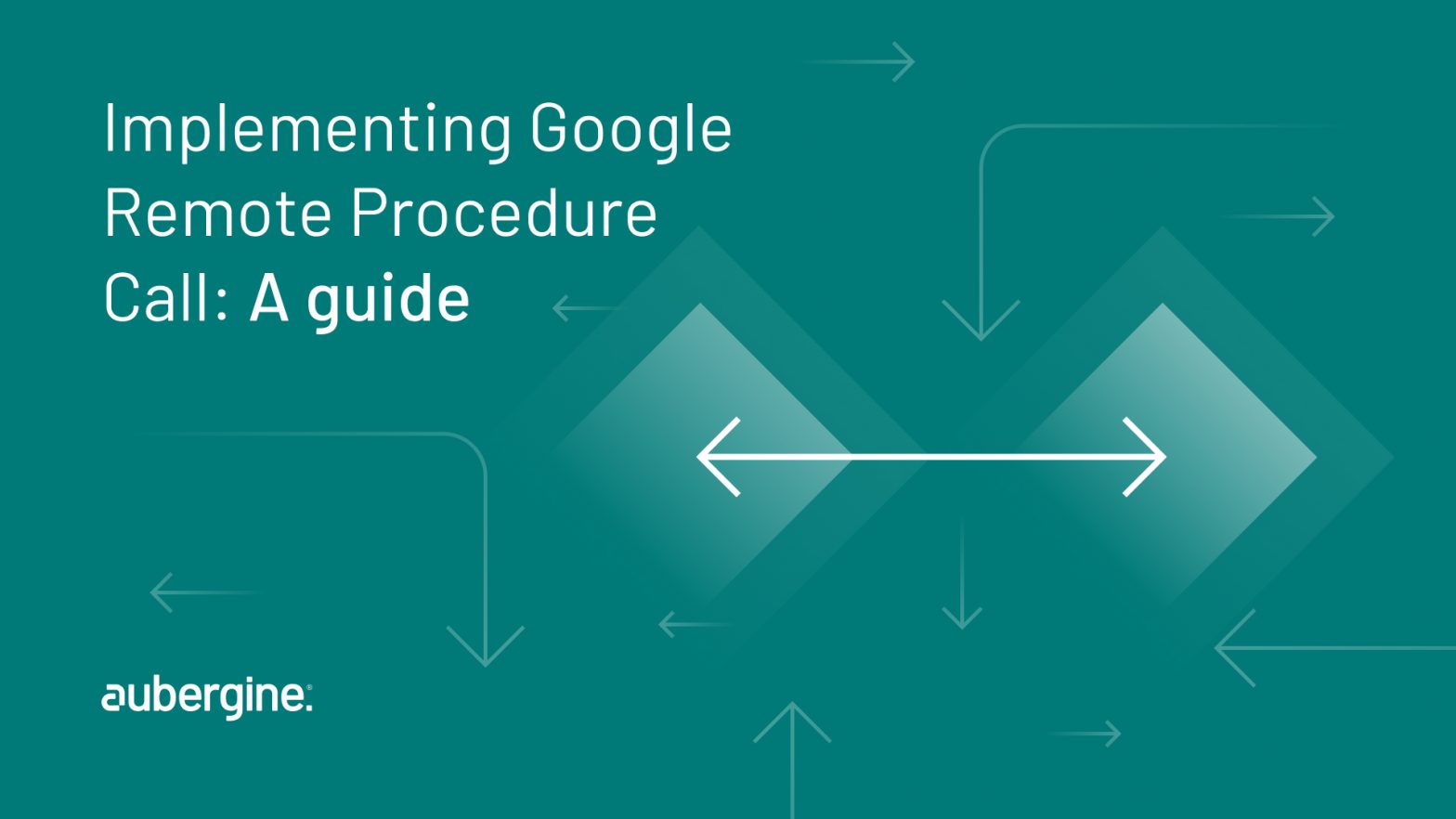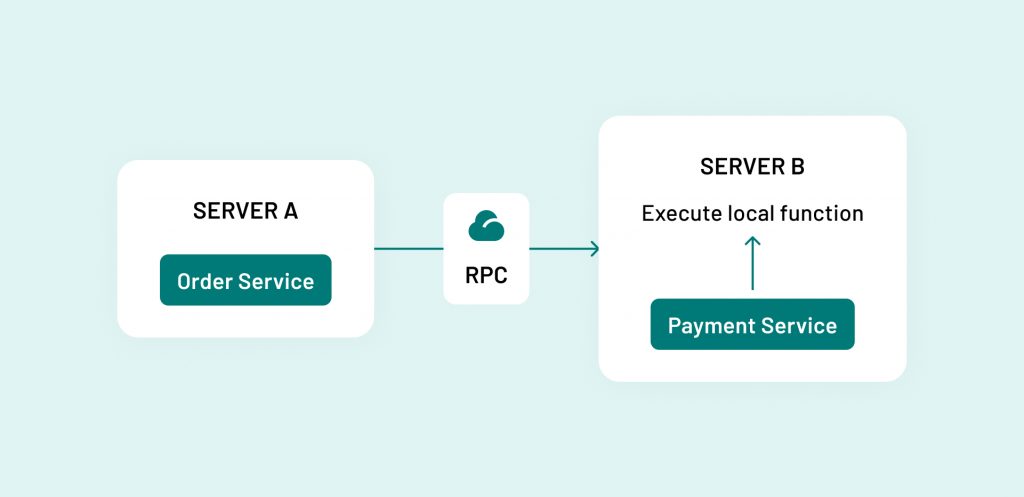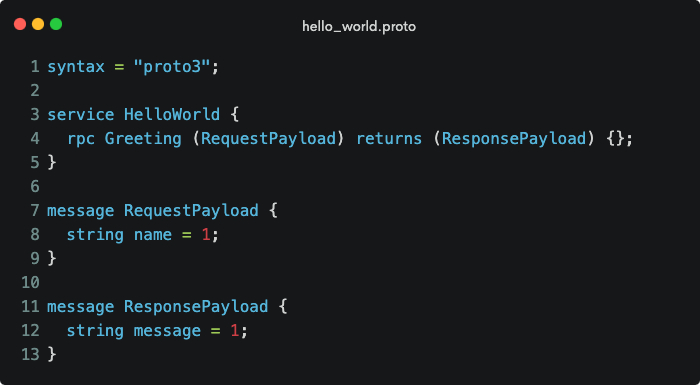
As microservices architectures continue to dominate the software development landscape, the importance of efficient, reliable inter-service communication has never been greater. gRPC, with its robust feature set, offers a compelling solution to this challenge.
By leveraging Protocol Buffers, HTTP/2, a strong developer ecosystem, and native support for streaming, gRPC enables developers to build fast, scalable, and maintainable services.
Whether you’re building a complex distributed system or simply require efficient communication between services, gRPC provides the tools and capabilities needed to succeed in the modern development environment.
Developed by Google in 2016, gRPC is an innovative open-source framework that implements the Remote Procedure Call (RPC) protocol.
It was conceived to address and simplify the complexities associated with traditional RPC implementation, reducing the boilerplate code significantly. By enabling fast, efficient communication between servers and clients, gRPC has positioned itself as an ideal protocol for microservices architectures, where numerous services frequently interact with each other over the network.
Remote Procedure Call (RPC) is a powerful concept in distributed computing that allows a program to cause a procedure to execute in another address space (commonly on another computer on a shared network) as though it were a local procedure call.
This abstraction simplifies the process of executing functions across different servers, making it easier to build and manage distributed systems by hiding the intricacies of direct server-to-server communication.

gRPC introduces a plethora of advantages over traditional communication protocols, making it a superior choice for modern application development, especially in microservices architectures.
Protocol Buffers is like JSON but smaller and faster. It is Google’s language agnostic and platform agnostic language that is used to serialize structured data. It is type safe. Protocol buffer is very efficient binary encoding format which is much faster than JSON.
Structure is written in .proto file, the code that the Proto compiler generates language specific interface classes and access methods.

Proto compiler will generate interface classes of Person message so that it can be easily used in a particular language like,
Person john = Person.newBuilder()
.setId(1234)
.setName("John Doe")
.setEmail("jdoe@example.com")gRPC uses plugin on top of proto compiler to generate addition server and client code.
Now that you know how good gRPC is let’s dive into how to use it. I’m going to use Python but it supports many languages like C++, Go, Node, Java and more. You can find supported languages here.
Steps to implement gRPC is simple:
Before you get started, you’ll need some tools.
grpcio to use gRPC functionality in python.
pip install grpcio
grpcio-tools this included protoc compiler and special plugin to generate server and client code from .proto files.
pip install grpcio-tools
We’ll create hello_world.proto file and define our HelloWorld service.

Hello World service have 1 rpc method Greeting which will be called by the client. This method takes RequestPayload message as parameter and return ResponsePayload message.
Now that we have our proto file, we’ll use protoc compiler with grpc plugin to generate the interface and server client code.
python -m grpc_tools.protoc -I./ --python_out=. --pyi_out=. --grpc_python_out=. ./hello_world.protoThis will generate python interface file and a grpc python file that’ll contain Client and server code. Let’s look at the grpc file.
class HelloWorldStub(object):
"""Missing associated documentation comment in .proto file."""
def __init__(self, channel):
"""Constructor.
Args:
channel: A grpc.Channel.
"""
self.Greeting = channel.unary_unary(
'/HelloWorld/Greeting',
request_serializer=hello__world__pb2.RequestPayload.SerializeToString,
response_deserializer=hello__world__pb2.ResponsePayload.FromString,
)
class HelloWorldServicer(object):
"""Missing associated documentation comment in .proto file."""
def Greeting(self, request, context):
"""Missing associated documentation comment in .proto file."""
context.set_code(grpc.StatusCode.UNIMPLEMENTED)
context.set_details('Method not implemented!')
raise NotImplementedError('Method not implemented!')
def add_HelloWorldServicer_to_server(servicer, server):
rpc_method_handlers = {
'Greeting': grpc.unary_unary_rpc_method_handler(
servicer.Greeting,
request_deserializer=hello__world__pb2.RequestPayload.FromString,
response_serializer=hello__world__pb2.ResponsePayload.SerializeToString,
),
}
generic_handler = grpc.method_handlers_generic_handler(
'HelloWorld', rpc_method_handlers)
server.add_generic_rpc_handlers((generic_handler,))Let’s add some simple logic to our Greeting function in HelloWorldServicer.
class HelloWorldServicer(object):
"""Missing associated documentation comment in .proto file."""
def Greeting(self, request, context):
name = request.name
responsePayload = hello__world__pb2.ResponsePayload(message=f"Hello {name}. Good Morning")
return responsePayloadWe’ll simply get the name from request payload and generate ResponsePayload with greeting message.
Now we’ll create server.py and client.py to start the RPC server and client to invoke the service.
# server.py
from concurrent import futures
import grpc
import hello_world_pb2_grpc
def serve():
server = grpc.server(futures.ThreadPoolExecutor(max_workers=10))
hello_world_pb2_grpc.add_HelloWorldServicer_to_server(hello_world_pb2_grpc.HelloWorldServicer(), server)
server.add_insecure_port("[::]:50051")
server.start()
server.wait_for_termination()
if __name__ == "__main__":
serve()serve() method will start a grpc server and add the service to the server by using add_HelloWorldServiced_to_server method that grpc has autogenerated. Running the server.py will start the grpc server on localhost:50051
# client.py
import grpc
import hello_world_pb2_grpc
from hello_world_pb2 import RequestPayload
if __name__ == "__main__":
channel = grpc.insecure_channel('localhost:50051')
stub = hello_world_pb2_grpc.HelloWorldStub(channel)
payload = RequestPayload(name='Het')
greeting = stub.Greeting(payload)
print(greeting.message)On the client, we’ll use HelloWorldStub and call the Greeting service with theRequestPayload and simply print the message we get.
You can find code at HetPatel72/gRPC-basic
gRPC supports four kinds of service methods, one of which is bidirectional streaming. This advanced feature allows both the client and server to send a sequence of messages using a read-write stream. This is particularly useful for real-time applications that require a persistent connection for live data updates.
Interceptors are a powerful feature in gRPC that allows you to run your code before and after the business logic. They are perfect for logging, authentication, and monitoring, enabling developers to implement middleware in a straightforward manner.
gRPC allows clients to specify how long they are willing to wait for an RPC to complete. Setting deadlines helps ensure your system’s reliability. Alongside, gRPC provides a rich error model that is expressive and can be used to handle failures gracefully in your applications.
Transport Layer Security (TLS) can be used to encrypt gRPC connections, ensuring data privacy and security. Implementing TLS in gRPC involves generating SSL certificates and configuring your gRPC server and client to use these certificates for encryption.
gRPC supports various authentication mechanisms, such as Basic Auth, JWT, and OAuth2. Integrating these mechanisms into your gRPC services enhances security, ensuring that only authorized clients can access your services.
gRPC supports compression out of the box, allowing you to compress the messages exchanged between client and server. This can significantly reduce bandwidth usage and improve the performance of your gRPC services.
gRPC offers client-side and look-aside load balancing. Implementing load balancing in gRPC applications ensures efficient distribution of requests, improving the overall performance and reliability of your services.
gRPC-Web allows web applications to directly call gRPC services from browsers. It’s a huge leap forward, bridging the gap between web applications and gRPC services without needing additional proxies or gateways.
gRPC is also ideal for mobile applications, offering first-class support for Android and iOS. This enables the development of highly responsive mobile applications that interact seamlessly with gRPC services.
By using an API gateway, you can expose your gRPC services as RESTful APIs, allowing clients that do not support gRPC to interact with your services. This ensures broader compatibility and accessibility of your services.
gRPC is inherently designed for low latency and high throughput communication, making it perfectly suited for microservices architectures. It simplifies service-to-service communication, ensuring efficient and reliable data exchange.
As we wrap up our exploration of gRPC, it’s evident that Google’s framework is revolutionizing the way we think about and implement inter-service communication. With its efficient use of Protocol Buffers, robust support across multiple languages, and seamless operation over HTTP/2, gRPC is a powerhouse for developers building microservices and distributed systems.
gRPC’s blend of high performance, scalability, and cross-language support makes it an indispensable tool in the modern developer’s toolkit. By leveraging features like bidirectional streaming and comprehensive security protocols, it enables the creation of responsive, secure, and efficient applications.
Through real-world applications and the thriving ecosystem around it, gRPC demonstrates its ability to meet the demands of today’s complex software architectures. Whether you’re just starting out with microservices or looking to enhance existing systems, gRPC offers a path forward that combines innovation with reliability.
In embracing gRPC, we’re not just adopting a new technology; we’re stepping into a future where distributed computing is more accessible, efficient, and scalable. Let’s continue to build on this foundation, pushing the boundaries of what’s possible in our connected world. The journey with gRPC is just beginning, and the possibilities are endless.

